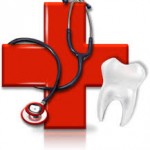
Many taxpayers seem to be unaware of the ability to claim medical and dental expenses on their personal tax returns. Furthermore, many self-employed taxpayers seem to be unaware of alternative options available to deduct these from their business income. So let’s tackle both of these issues.
Here is a brief summary of medical and dental expenses that can be claimed on your personal tax return:
- extended health and dental premiums paid through employment (they are taken off your paycheque and NOT paid by your employer; does not include life insurance, AD&D, short or long term disability)
- extended health and dental premiums paid to a private plan like Manulife or Pacific Blue Cross
- dental expenses including crowns, cleanings, fillings, root canals, etc.
- orthodontic expenses including braces, retainers, etc.
- medical practitioners including physiotherapy, chiropractic, registered massage therapy, acupuncture, naturopath, kinesiology, etc.
- ambulance and hospital rooms
- attendant care and nursing home
- difference in food costs for those with celiac or gluten intolerance (i.e. regular loaf of bread is $2 and gluten free is $8 so you can claim $6 for every loaf purchased in a year)
- cosmetic surgery (when medically necessary)
- prescription drugs and vaccines
- hearing aids
- orthopedic shoes, boots and inserts
- tutoring services (when there is a learning disability)
Some of these items do have conditions for claiming however you can always check out CRA’s comprehensive A-Z list for more information. Also, when it comes to medical practitioners, each province has their own list of who qualifies and who doesn’t so make sure you check that out too.
Now that we know what’s deductible, let’s look at how a small business owner can deduct these. Either way, as an individual taxpayer, you can receive a tax credit on the difference between your total eligible expenses and the 3% minimum threshold (2024 maximum is $2,759).
To avoid losing the ability to claim the first $2,152 of expenses, as a business, you have another option which is to let the business pay for your medical and dental expenses. Now it isn’t as simple as the company paying for them. There are health and dental plans available with your local Chamber of Commerce, or providers like Manulife or Pacific Blue Cross, however these types of insurance plans will charge you a monthly premium which will then only cover a certain percentage of the above items. There are too many variables to consider here so I will not include them in the comparison.
Or you can set-up a health trust. What I like about the health trust is that there is no monthly fee. You pay a nominal one-time set-up fee and an admin fee based on what you actually use of the plan (the one I use is 5% but many are upwards of 10%). It isn’t an insurance plan but rather a self-funded plan. Since you are already out-of-pocket for the medical and dental expenses, having this plan allows you to deduct 100% of those same expenses in your business instead of receiving a tax credit on the difference paid over 3% of your net income.
Let me show you an example. A family of four with combined net income of $100,000, a 20% tax rate and total medical and dental expenses of $5,000 for the year.
- Tax Credit Option: $5,000 - $2,759 (2024 maximum threshold) = $2,241 * 20% tax credit rate = $448.00 of tax savings
- Health Trust Option: $5,000 * 20% = tax savings of $1,000. The admin fee would be $250 (5% of $5,000; not including the one-time set-up fee, if applicable). Total net tax savings are $750 ($1,000 - $250).
Keep in mind, the net tax savings under option 2 does not include the CPP premiums saved which would happen by having a reduced personal income as the expenses are no longer paid out of your personal pocket but rather the companies.
Therefore, the difference between using the tax credit and having a health trust is $302 of tax savings.
Your numbers and situation may be different so remember to always seek the advice of a Professional Accountant before implementing anything.
***This blog is for information only and not to be used as tax advice or planning without first seeking professional advice. Information is subject to change without notice.
